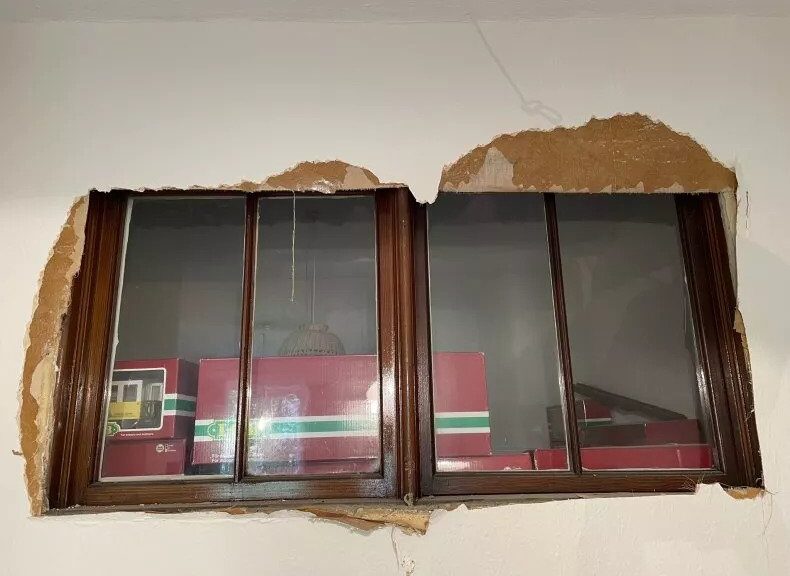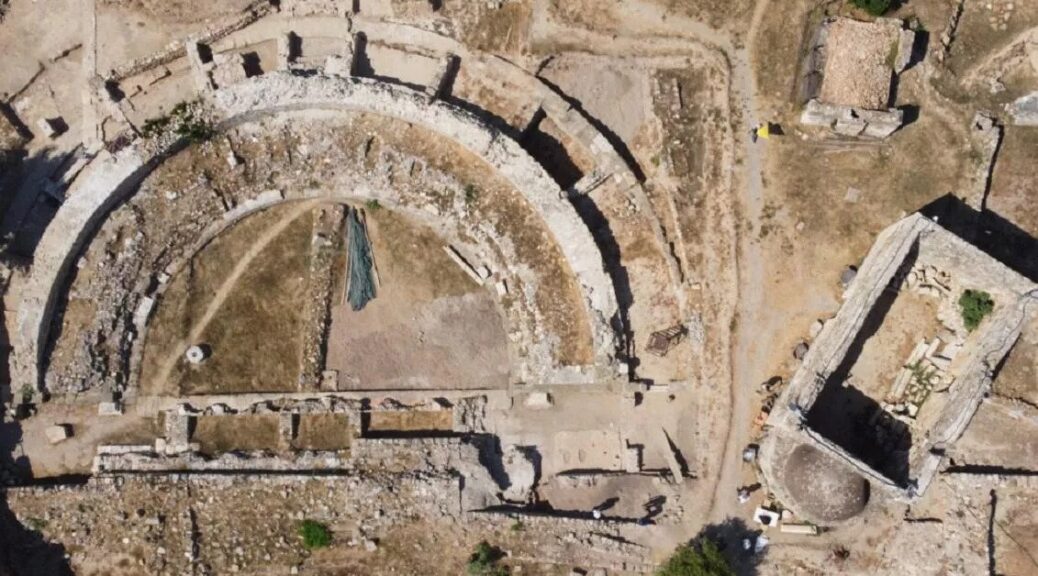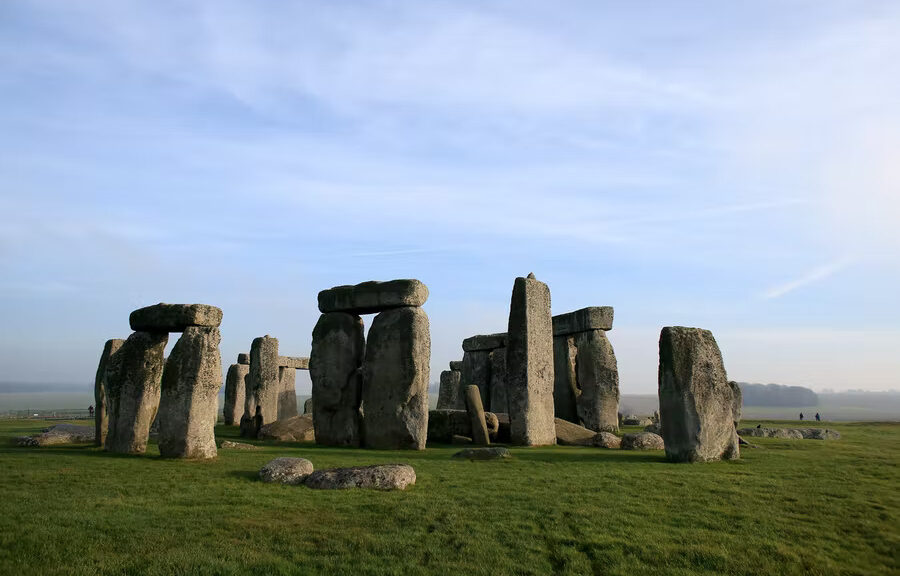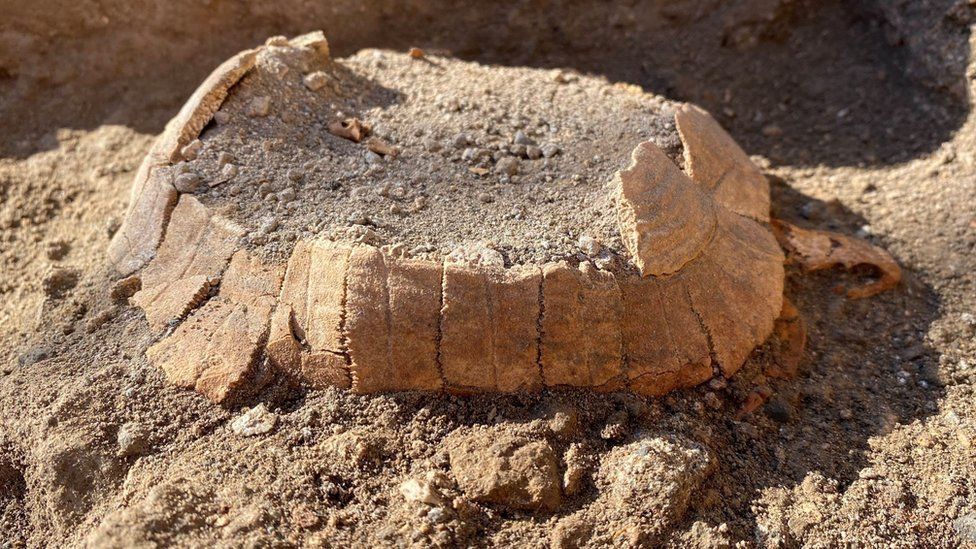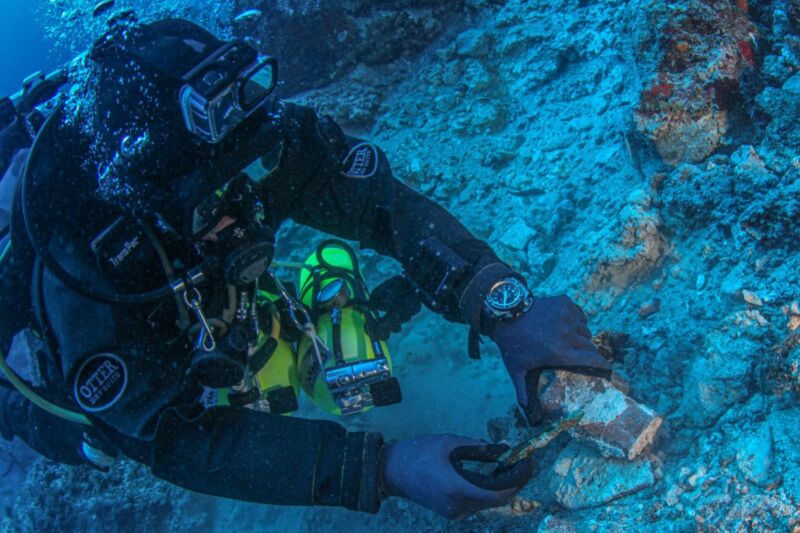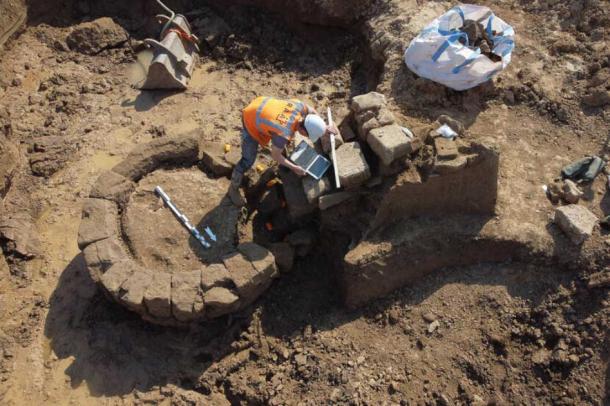Man Finds Secret Window Hidden Behind Wallpaper in 19th-Century Home
A man discovered a secret window hidden behind wallpaper in his house, thought to date back to the 19th century, as he lovingly renovated the property. Alex Howard is restoring the antique grandeur to his home, in Edinburgh, Scotland, and has been sharing progress to his TikTok page, @housedoctoralex.
Howard, an author, has been painstakingly removing all the woodchip wallpaper throughout the house—similar to popcorn style—when he found something unusual lurking behind the hardboard. He shared a clip of himself up a ladder armed with a wallpaper scraper, as he pokes a hole through the covering, and realizes there’s something on the other side. Howard immediately rips off the wallpaper, shouting “window” as he uncovered the black-rimmed frame. He captioned the video, which can be seen here: “Wtf I found a hidden window in my flat,” adding: “Well that was unexpected.”
In the comments, he revealed the woodchip was “getting steamed off and re-lined next month,” explaining the window was covered by flimsy sheets of hardboard. Speaking to Newsweek, Howard explained the two-bedroom apartment was built around 1890, and he and his wife are slowly returning it to its former glory after it’s “no doubt been home to countless students and tyrannical landlords over the years.”
He said: “There’s nearly always a window connecting the kitchen alcove and a box room (which has often been converted into a kitchen bathroom). Presumably, it was the Victorian idea of giving that little interior space some natural light. In fact, I learnt only yesterday they are called ‘borrow windows,’ presumably because you’re borrowing light from another room.
“When we arrived, I did that classic ‘dad’ thing of tapping up the wall to hear if the tone changed. Sure enough, I discovered that the window had just been dry-walled over. The fact that there was then a layer of woodchip on top of that, suggests that it was done at least as far back as the 70s.”
He added the glass was single-glazed, saying: “They’re that old pre-war ripply glass like all the windows in this flat. All our windows make things look a bit wibbly, and distorted when you look through them because of the more unrefined, pre-war glazing techniques. You can see the oddly replaced pane because it doesn’t distort.”

The clip, shared in June, amassed more than 400,000 views, and people were so intrigued that Howard shared a follow-up clip. It shows he found a pair of windows, with two panes each, covered up between two rooms.
“So some of you have been asking about the backstory to these here windows that I discovered yesterday,” he said.
Howard, who moved in two months ago, gave viewers a mini-tour, saying: “I’ve worked it out, follow me down the hall, and into the box room. But why you might say might one block windows to a box room.
“It was once a bedroom. The reason I know is that up here there’s a light switch which controls the lights in the room. This means at some point there was a mezzanine level up here with a bed installed when this was rented out as its own separate bedroom.
“Some of you may have heard of HMO, or houses in multiple occupancies, before this was introduced any room could be rented out to someone regardless of whether or not it had a window in it. Thankfully we live in more enlightened times now and you can only let out a room if it’s got a window.”
It’s thought that as the window connects two rooms, rather than leading to the outside, they were covered to give each tenant privacy.
Howard explained: “This is what we’re putting the blocked-up window down to—the room on the other side is a box room with its plug sockets/switches mounted high up the wall. We reckon it was rented out as a room with a mezzanine bed, pre-HMO regulations when landlords crammed these flats full of students to cash in.
“But what is clear is that the blocked-up window is an attempt to make that postage stamp of a box room ‘private.’ Pretty sad to think that tiny, windowless space was some poor student/servant’s room at one point!”
He added that the smaller room was what the U.K. refers to as a “box room,” which is essentially a glorified cupboard, which is why the bed was on a mezzanine.
READ ALSO: UNDERGROUND LABYRINTH WITH SECRET PASSAGES, AND TUNNELS IN DOBROGEA PLATEAU, ROMANIA
Howard clarified they’re “just a bit bigger than a walk-in cupboard,” adding: “They’re small rooms, bigger than a cupboard but smaller than a conventional room, that was traditionally used for lodgers. This one’s about 6×5.'”
Numerous people commented on the original clip, with Liam Burgeson asking: “Who does these things.”
Mecha_genki said: “We had this too! Didn’t notice it because it was on the side we never went down”
While MissMisty wrote: “Why was the window covered in craft paper? Lean against it too hard and your arm would go through.”
Marvin Harold joked: “Previous owner must have worked nights.”
